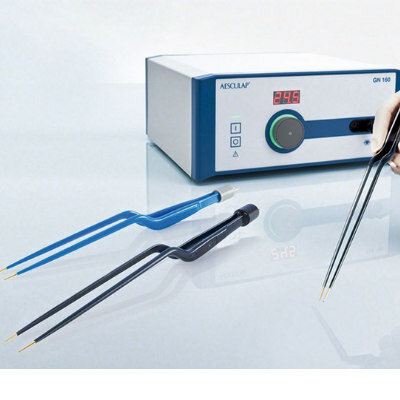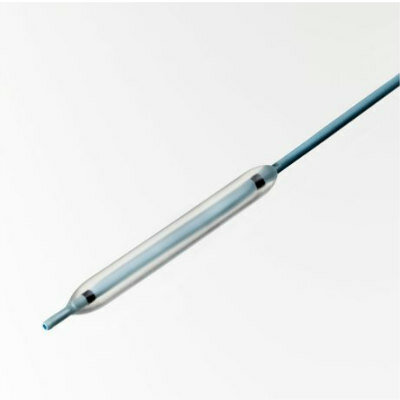Magnetic Blood Filtering System Draws out Disease
|
By HospiMedica International staff writers Posted on 03 Dec 2019 |
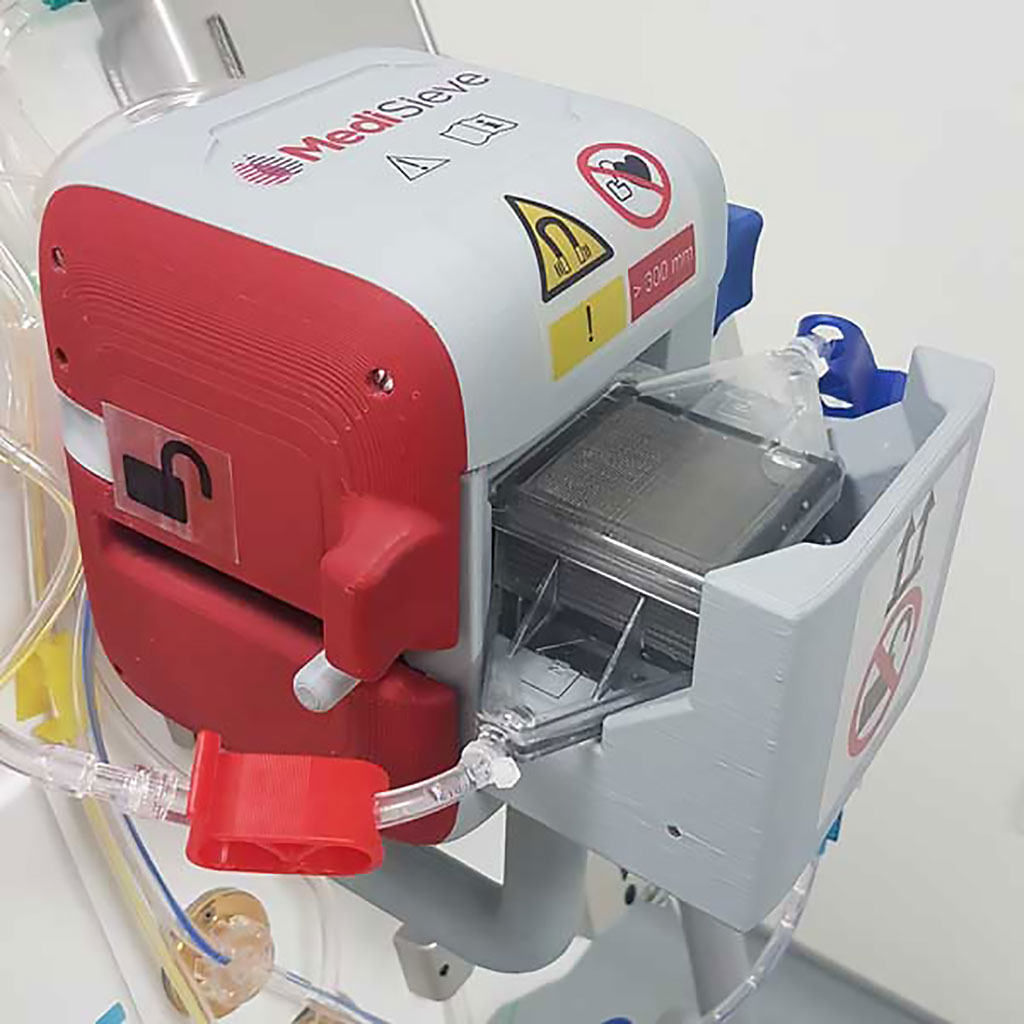
Image: The MediSieve magnetic blood filtering system (Photo courtesy of MediSieve)
An innovative blood filtering system could draw out deadly infections such as malaria and sepsis from the body using magnets.
The MediSieve (London, United Kingdom) filtering technology works in a similar way to dialysis. Blood is taken from a patient and infused with the MediSieve magnetic particles, which attach to specific targets so that they can be subsequently captured by a magnetic filter and removed from the blood before it is pumped back into the body. Particle size, magnetic properties, and number of binding agents coating the nanoparticles are all engineered to ensure maximal capture and removal by the filter. The whole process takes around two to four hours.
“In theory, you can go after almost anything. Poisons, pathogens, viruses, bacteria, anything that we can specifically bind to, we can remove. So, it’s a very powerful potential tool,” said George Frodsham, CEO and founder of MediSieve. “When someone has a tumor, you cut it out. Blood cancer is a tumor in the blood, so why not just take it out in the same way? Now we know it’s possible; it’s just a question of figuring out some of the details.”
Blood can be repeatedly passed through the system until the target is at such a low concentration that the immune system or a short course of medication can remove it. The first disease due to be tested for device efficacy is malaria; interestingly, in this case, the first step is not necessary, as malaria targets iron-rich blood cells and consumes hemoglobin, turning it magnetic. Further trials will be conducted to see whether the nanoparticles can remove sepsis-causing bacteria and tone down the deadly immune response.
“Malaria treatment is our flagship product because the infected cells have naturally occurring magnetic properties. The malaria parasite invades the red blood cell and consumes the hemoglobin, and therefore it leaves an iron-based waste product, which it then takes inside itself. So effectively malaria parasites poop is magnetic, and then it eats its poop,” explained Mr. Frodsham. “We really feel we can have a material human impact to help those suffering the most from the disease, particularly children and pregnant women.”
Related Links:
MediSieve
The MediSieve (London, United Kingdom) filtering technology works in a similar way to dialysis. Blood is taken from a patient and infused with the MediSieve magnetic particles, which attach to specific targets so that they can be subsequently captured by a magnetic filter and removed from the blood before it is pumped back into the body. Particle size, magnetic properties, and number of binding agents coating the nanoparticles are all engineered to ensure maximal capture and removal by the filter. The whole process takes around two to four hours.
“In theory, you can go after almost anything. Poisons, pathogens, viruses, bacteria, anything that we can specifically bind to, we can remove. So, it’s a very powerful potential tool,” said George Frodsham, CEO and founder of MediSieve. “When someone has a tumor, you cut it out. Blood cancer is a tumor in the blood, so why not just take it out in the same way? Now we know it’s possible; it’s just a question of figuring out some of the details.”
Blood can be repeatedly passed through the system until the target is at such a low concentration that the immune system or a short course of medication can remove it. The first disease due to be tested for device efficacy is malaria; interestingly, in this case, the first step is not necessary, as malaria targets iron-rich blood cells and consumes hemoglobin, turning it magnetic. Further trials will be conducted to see whether the nanoparticles can remove sepsis-causing bacteria and tone down the deadly immune response.
“Malaria treatment is our flagship product because the infected cells have naturally occurring magnetic properties. The malaria parasite invades the red blood cell and consumes the hemoglobin, and therefore it leaves an iron-based waste product, which it then takes inside itself. So effectively malaria parasites poop is magnetic, and then it eats its poop,” explained Mr. Frodsham. “We really feel we can have a material human impact to help those suffering the most from the disease, particularly children and pregnant women.”
Related Links:
MediSieve
Latest Critical Care News
- Cuff-Free Blood Pressure Monitoring Device to Improve Early Detection and Management of Hypertension
- New Understanding of Barrett’s Esophagus Formation to Enable Earlier Intervention and Diagnosis
- 3D Printed Functional Human Islets Could Transform Type 1 Diabetes Treatment
- AI Model Predicts ICU mortality in Heart Failure Patients
- Smart Capsule Offers Real-Time Profiling Across GI Tract
- Ultra-Thin Implant Helps Patients with Spinal Cord Injury Recover Lost Functions
- Portable Cell Therapy Device to Enable Rapid On-Demand Modification of RBCs at POC
- Monitoring Airborne Fungal Spores Could Help Predict COVID-19 & Flu Surges
- New System Measures Blood Sodium Without Needles
- Sleep Data from Wearable Device May Help Predict Preterm Birth
- AI Tool Interprets Echocardiograms in Minutes
- Electrochemical Catheter Hub Prevents Bloodstream Infections
- Noninvasive Double Microbubble Delivery Approach Marks Breakthrough in Brain Cancer Treatment
- Self-Healing Skin-Like Material to Find Applications in Health Monitoring, Surgery and Implants
- Highly-Sensitive Electronic Skin Allows Robots to Feel Heat, Pain and Pressure

- AI-Powered Wearable Sensor Predicts Labor Onset in Pregnant Women
Channels
Surgical Techniques
view channel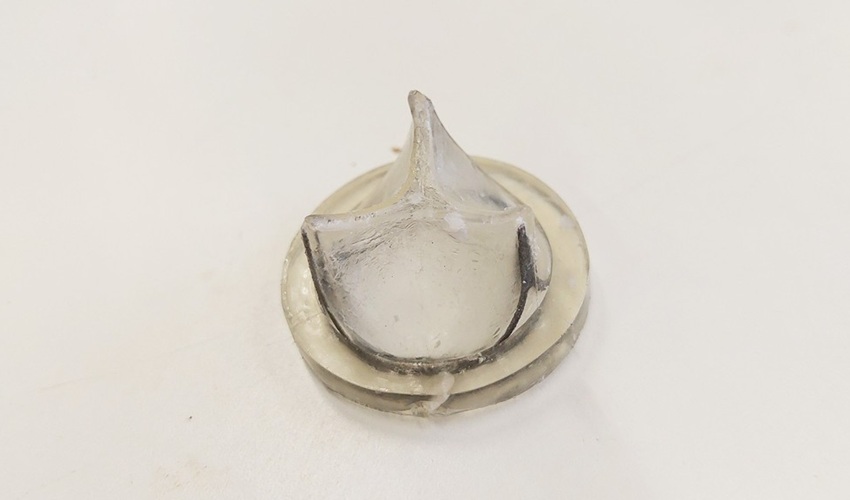
Breakthrough Polymer Significantly Improves Safety of Implantable Medical Devices
Every year, millions of patients receive implantable cardiovascular devices such as arterial and venous catheters, pacemaker leads, artificial hearts, and vascular prostheses. These devices, typically... Read more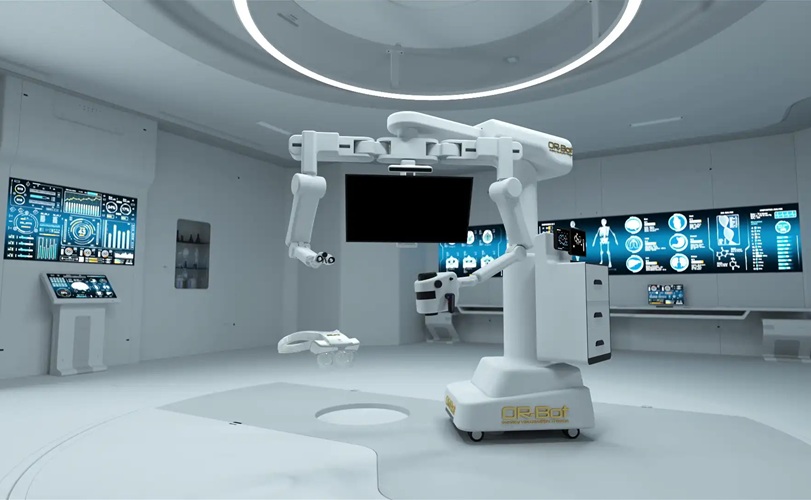
First-Ever Technology Makes Blood Translucent During Surgery
No matter the discipline or scale, bleeding is a regular part of any surgery and can create several challenges. In operating room imaging, seeing through blood in real-time during a surgery has been a... Read more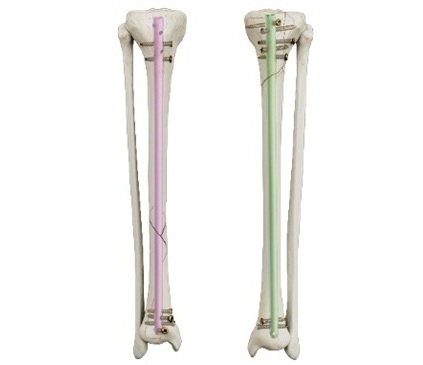
Tibia Nailing System with Novel Side-Specific Nails to Revolutionize Fracture Surgery
Smith+Nephew (Hull, UK;) has launched its new TRIGEN MAX Tibia Nailing System for stable and unstable fractures of the tibia, including the shaft. It is the only system to now offer trauma surgeons the... Read morePatient Care
view channel
Revolutionary Automatic IV-Line Flushing Device to Enhance Infusion Care
More than 80% of in-hospital patients receive intravenous (IV) therapy. Every dose of IV medicine delivered in a small volume (<250 mL) infusion bag should be followed by subsequent flushing to ensure... Read more
VR Training Tool Combats Contamination of Portable Medical Equipment
Healthcare-associated infections (HAIs) impact one in every 31 patients, cause nearly 100,000 deaths each year, and cost USD 28.4 billion in direct medical expenses. Notably, up to 75% of these infections... Read more
Portable Biosensor Platform to Reduce Hospital-Acquired Infections
Approximately 4 million patients in the European Union acquire healthcare-associated infections (HAIs) or nosocomial infections each year, with around 37,000 deaths directly resulting from these infections,... Read moreFirst-Of-Its-Kind Portable Germicidal Light Technology Disinfects High-Touch Clinical Surfaces in Seconds
Reducing healthcare-acquired infections (HAIs) remains a pressing issue within global healthcare systems. In the United States alone, 1.7 million patients contract HAIs annually, leading to approximately... Read moreHealth IT
view channel
Printable Molecule-Selective Nanoparticles Enable Mass Production of Wearable Biosensors
The future of medicine is likely to focus on the personalization of healthcare—understanding exactly what an individual requires and delivering the appropriate combination of nutrients, metabolites, and... Read more
Smartwatches Could Detect Congestive Heart Failure
Diagnosing congestive heart failure (CHF) typically requires expensive and time-consuming imaging techniques like echocardiography, also known as cardiac ultrasound. Previously, detecting CHF by analyzing... Read moreBusiness
view channel
Bayer and Broad Institute Extend Research Collaboration to Develop New Cardiovascular Therapies
A research collaboration will focus on the joint discovery of novel therapeutic approaches based on findings in human genomics research related to cardiovascular diseases. Bayer (Berlin, Germany) and... Read more








